세계를 다니며 벽에 조각하는 길거리 아티스트 Interview: One Artist is Carving Walls Around the World to Turn Them into Portraits of Locals
Interview: One Artist is Carving Walls Around the World to Turn Them into Portraits of Locals
Left: Vhils at work in Hong Kong | Right: Work in Hong Kong, China (Photo: Fernando Guerra)
톱 길거리 아티스트 중 한 사람인 포르투갈 출신 알렉산드레 파르토(Alexandre Farto)
'빌스'라는 이름으로 더 유명하다.
2008년부터 떠오르기 시작한 그의 작품 스타일은 디양한 공구를 사용해 벽을 치즐링하는
방법을 사용한다.
황기철 콘페이퍼 에디터
Ki Chul Hwang, conpaper editor
By Jessica Stewart on June 2, 2017
One of the top street artists today, Alexandre Farto, better known as Vhils, is continuing to evolve and push his trademark style. Emerging on the scene in 2008, his work, which consists of chiseling away layers of walls using a variety of tools, made him an instant sensation. Over time, the Portuguese artist has honed and refined his technique, using it across different media to great effect.
By cutting and carving his way through cities around the global, he's acted both as an urban archeologist, revealing layers of history, and as a sculptor using his tools to reveal a message hidden within the wall. It's no wonder that, in 2015, Forbes magazine counted him as one of the esteemed “30 under 30s” in Art & Style.
Part of Vhils' success is owed to his willingness to push himself beyond the limits of the wall. Whether it be collaborations with U2 as part of their Films of Innocence videos or by giving back to his community through the Underdogs arts center in Lisbon, he continues to prove that street artists hold a place in the contemporary art community.
On the cusp of his new solo show in Macau, Debris, which opened on May 31, 2017 at the Navy Yard No. 1 Contemporary Arts Center, we had the chance to ask Vhils a few questions and reflect back on his evolution.
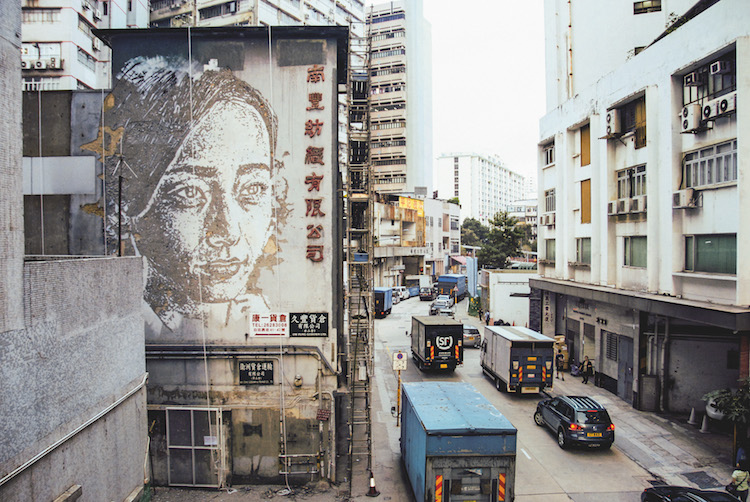
Hong Kong, China, 2015.
Your technique is so innovative. Can you take us through a little bit of how you developed your process in the beginning?
The work I'm doing today basically came about from the convergence of two factors: using a technique of reverse stenciling while exploring the notion of creative vandalism I got from illegal graffiti. Graffiti is my artistic background, it taught me a lot and gave me many working skills before I went to art school and university.
As I matured, I started exploring other media and experimenting with other tools, and things just sort of developed from there. The greatest change was when I started working with stencils, which showed me a new direction. In Portugal, street posters are hardly ever removed and they end up creating these thick agglomerations. I realized one day that they would make a good canvas, as I could carve through their layers.
I had already been using stencils for a while then, doing the classic thing of creating an image by adding layers, when I realized I could reverse the process and start removing them instead to create compositions. I didn't want to be adding yet another layer to the walls. When I first cut through these agglomerates of posters I noticed that fragments of older posters came to light, and I immediately connected this with my observations of the old walls of Lisbon that seemed to be steeped in history, as if the passage of time added new layers and buried some of the past beneath.
Lisnave, Portugal, 2014.
Carving through these posters was like carving through layers of the city's recent history. I understood how chaotic life in the city really is, how fast things change with this pace of development and transformation. I felt like I was looking at a type of fossil representing contemporary culture and my mind flooded with possibilities. I began using the stencil as a tool to dig into these superimposed layers, which I began seeing as a form of symbolic urban archaeology.
I eventually moved on to carving walls and started the Scratching the Surface project, based on this same concept, which became a reflection on identity and all the different layers that form us. When I began traveling to other countries I saw the same process in action there.
City walls are like an ongoing palimpsest that captures some of the changes that take place in the streets, and these speak both of local specificities, as each place has its own history, but also of the increasing homogenization of the urban environment taking place in the world today.
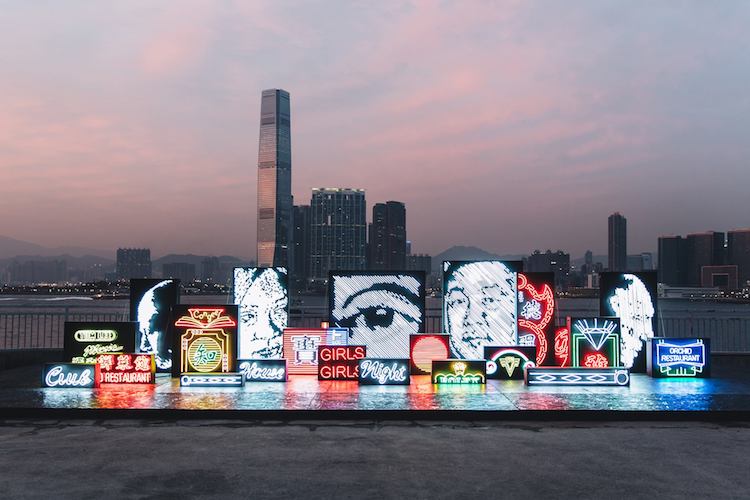
Gleam series, light installation. Hong Kong, China, 2016.
There has been such an evolution of your work over the years. Where do you see yourself going with your art in the future?
I can't really say. I'm a great experimentalist and much of the direction my work takes comes simply from random results achieved through experimenting with materials and techniques. When I put ideas into practice, some of them work out and many others don't, but even these can point a new direction, something interesting to explore. I never disregard mistakes or errors, in one way or another, there is a lot of potential in them. I also truly believe that anything we create or produce is a reflection of the times we live in, of the multiple influences we are subjected to in our daily lives, so you never really know when something inspiring might come up. I just want to keep working in whatever direction I find interesting.
Vhils and Pixel Pancho collaboration for Underdogs. Lisbon, Portugal, 2014. READ MORE: Extraordinary Street Art Collaboration by Pixel Pancho and Vhils
You’ve been such a champion for supporting your local arts community in Lisbon with things like Underdogs. Why was this important to you?
I truly believe in this new art movement that some have labeled urban art or street art—which I really dislike as it limits the diversity of a movement that includes a multiplicity of areas, visual language, and backgrounds, from conceptual artists to graffiti writers, from graphic artists to muralists, etc.
The common thread between them is the fact that they are all working with or inspired by the visual chaos that modern-day urban environments have been giving us for the last decades. I truly believe that these creative energies should be part of the way we think the city as a whole—by making art part of the city, not only does it make it accessible to everyone, it also drives freedom of expression, injects new cultural value into the city by activating its cultural activities, it helps regenerate the urban fabric, and all of these end up contributing towards creating social and economic impact.
In the case of Lisbon and Underdogs, I simply came to a point when I wanted to give something back to the city, the community, and other talented artists I saw struggling to make ends meet. I was tired of seeing all this potential go to waste, there are so many people doing amazing and crazy things there, who have really contributed to the beautiful momentum Lisbon is living now. I felt it was my duty to do something to help out.
None of this would've been possible without my partner, Pauline Foessel, who co-directs the platform with me, and the amazing team working with us. When we started there was nothing like this in Lisbon or Portugal. The idea was essentially to provide a service to artists, the city, and the community. This involved opening a gallery where Portuguese and foreign artists who have been operating outside the established circuit could show their work, while also creating the opportunities for them to work properly in the public space and give something to the city, and putting out affordable artist editions as a means of reaching out to the public and creating a bond with them. None of this was easy to achieve, but we're lucky that the project has resonated so well with the community, the artists, and the public.
Want to understand the evolution of Vhils' work? These must-see works will help you see how the acclaimed street artist has developed his signature style.
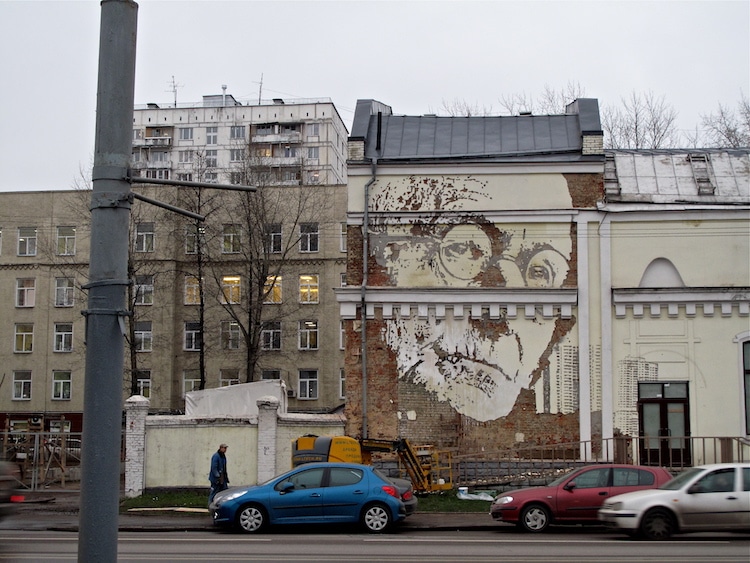
Moscow, Russia, 2010.
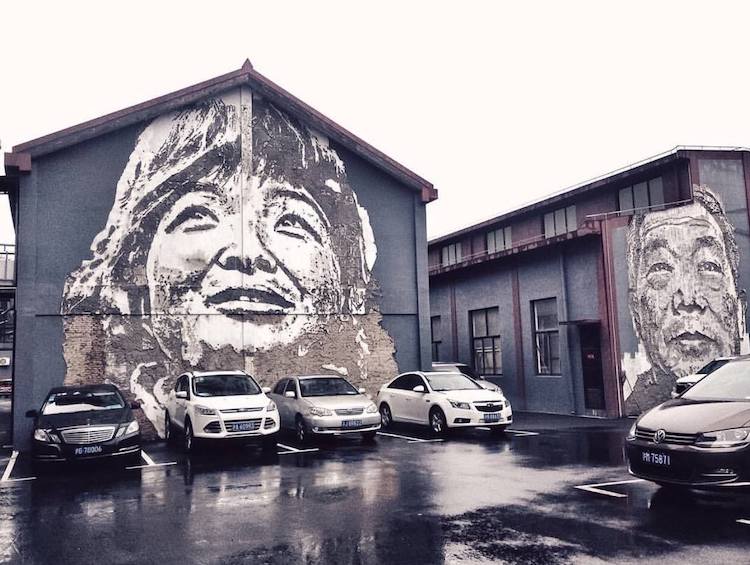
Shanghai, China, 2012.
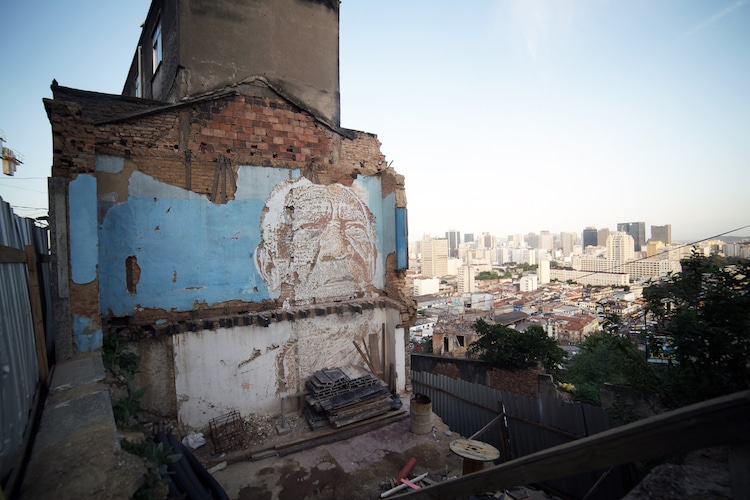
Rio de Janeiro, Brazil, 2012.
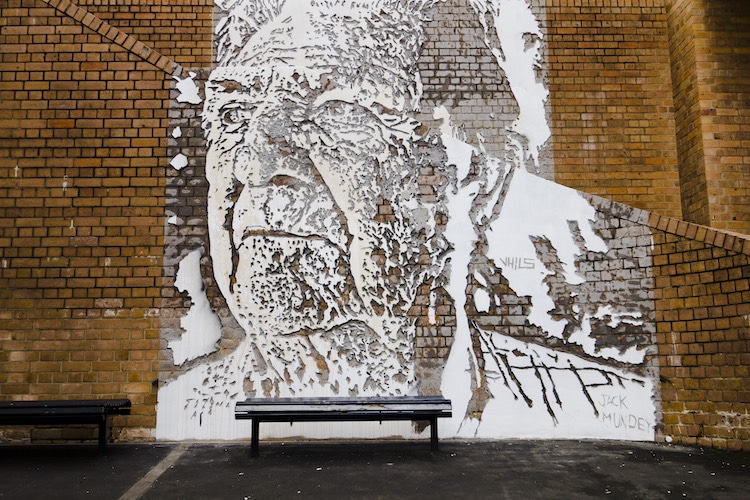
Sydney, Australia, 2013.
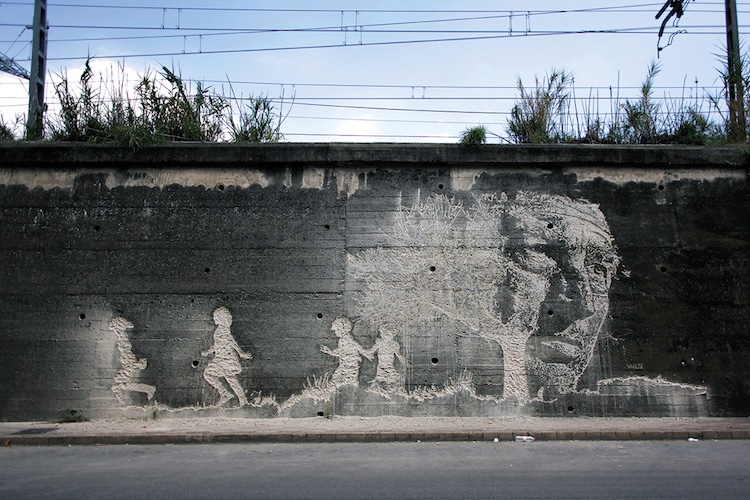
Girona, Spain, 2013.
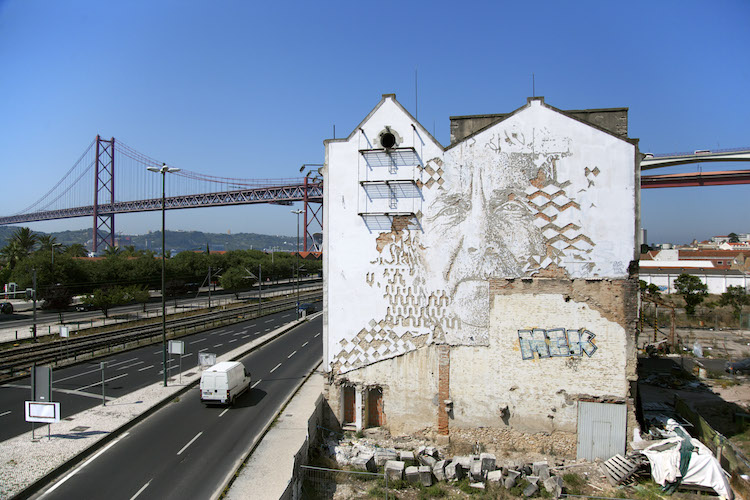
Lisbon, Portugal, 2014. (Photo: Alexander Silva)
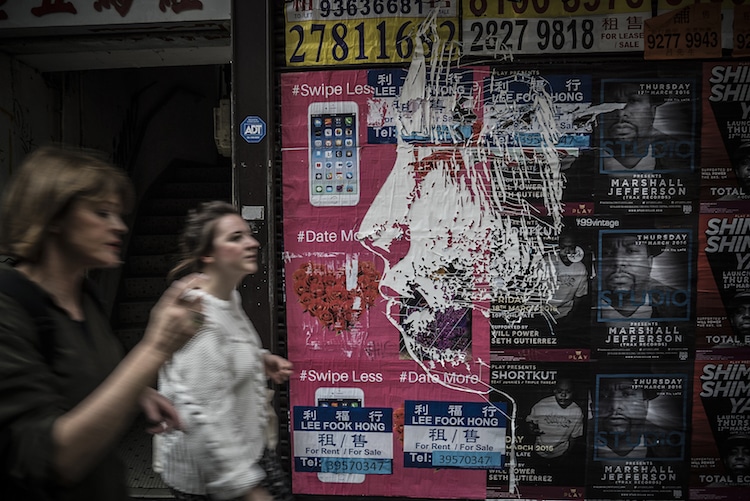
Hong Kong, China, 2016. (Photo: Jose Pando Lucas)
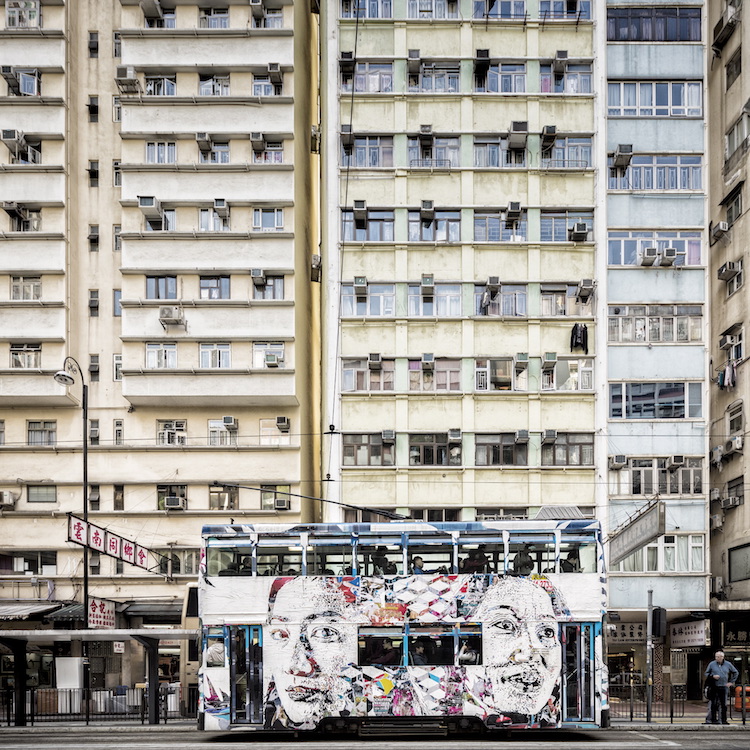
Hong Kong, China, 2016. (Photo: Fernando Guerra)
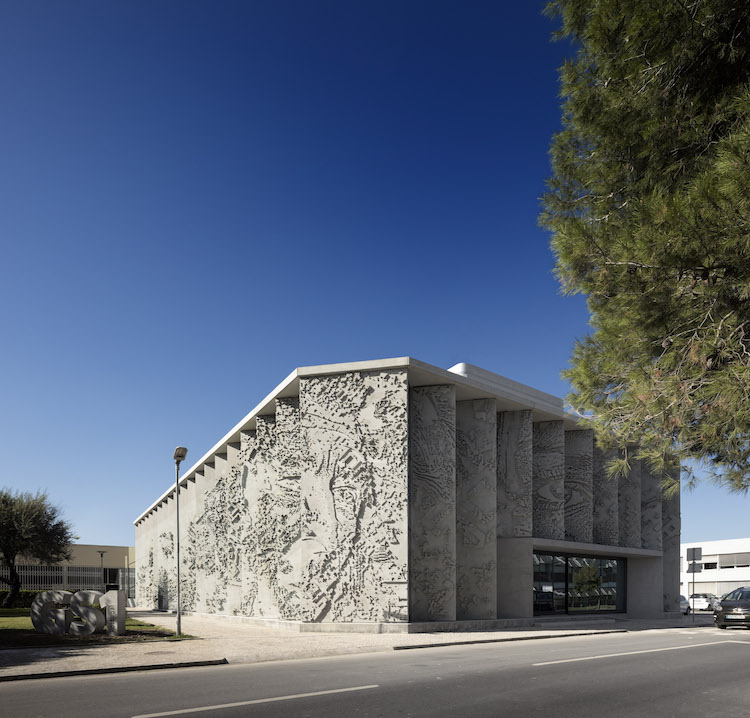
Center for Innovation and Competitiveness, GS1 Portugal headquarters. Precast concrete moulding, 2016.
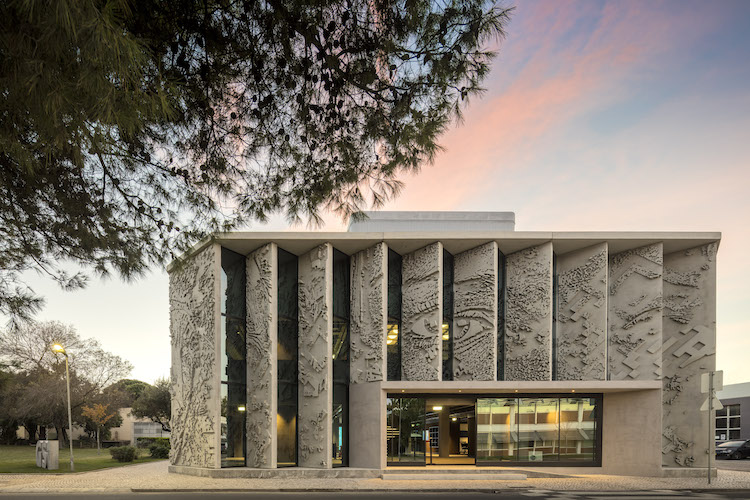
Center for Innovation and Competitiveness, GS1 Portugal headquarters. Precast concrete moulding, 2016.
Video has always been a centerpiece of Vhils' work, from his 2011 explosive art demonstration to his 2014 collaboration with U2.
Vhils: Website | Facebook | Instagram
My Modern Met granted permission to use photos by Vhils.









